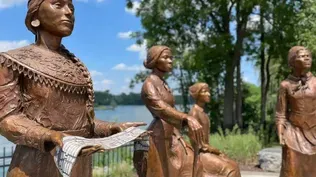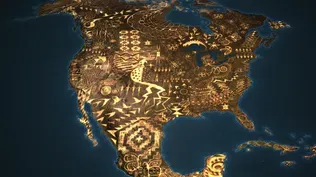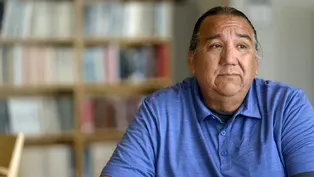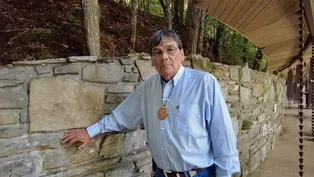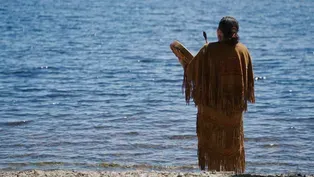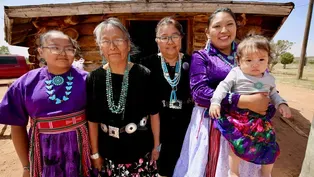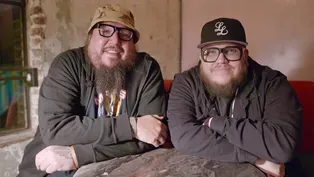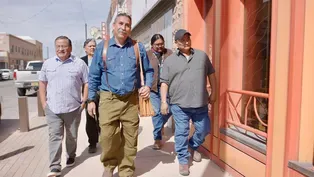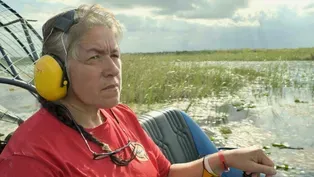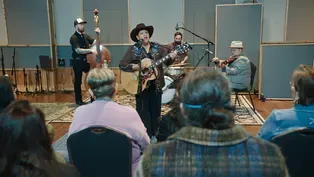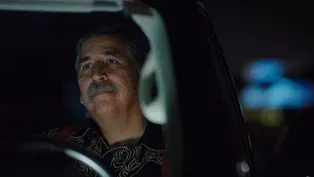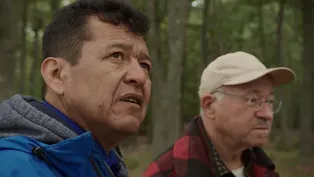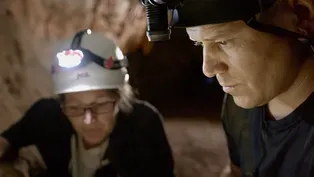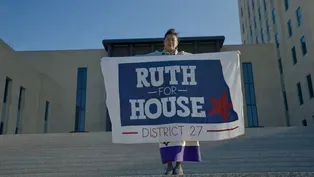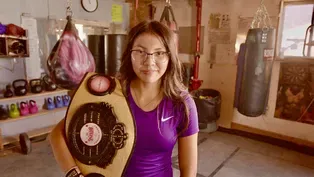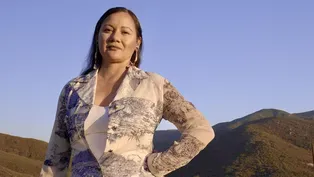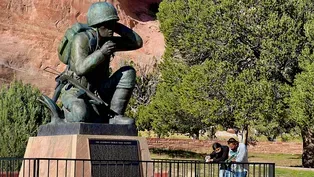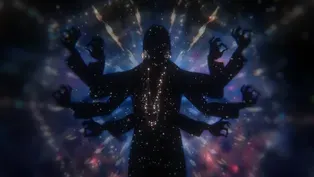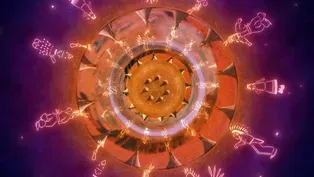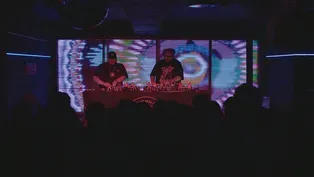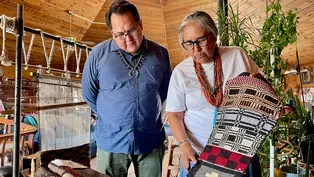
Reading Between the Lines in Cherokee
Clip: Season 2 | 5m 3sVideo has Closed Captions
Language expert Tom Belt translates some of the earliest evidence of Cherokee writing.
Eastern Band of Cherokee Indians archaeologist Beau Carroll and Cherokee Nation citizen and historian Julie Reed explore a cave containing some of the earliest evidence of Cherokee writing. Tom Belt, an expert on the Cherokee writing system, translates the words, but to understand what they mean, he needs to provide the when and why they were written.
Funding is provided by Partnership with Native Americans.

Reading Between the Lines in Cherokee
Clip: Season 2 | 5m 3sVideo has Closed Captions
Eastern Band of Cherokee Indians archaeologist Beau Carroll and Cherokee Nation citizen and historian Julie Reed explore a cave containing some of the earliest evidence of Cherokee writing. Tom Belt, an expert on the Cherokee writing system, translates the words, but to understand what they mean, he needs to provide the when and why they were written.
How to Watch Native America
Native America is available to stream on pbs.org and the free PBS App, available on iPhone, Apple TV, Android TV, Android smartphones, Amazon Fire TV, Amazon Fire Tablet, Roku, Samsung Smart TV, and Vizio.
Buy Now
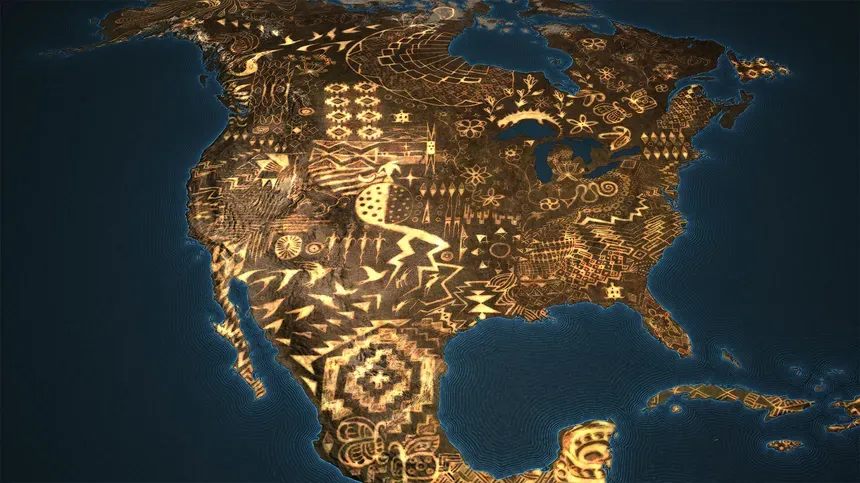
Listen to Native Voices
Explore an interactive map, which features speakers of Native languages in their own voices from across North America.Providing Support for PBS.org
Learn Moreabout PBS online sponsorshipBEAU CARROLL: When you come in here, this is the first thing that you notice... JULIE REED: Yeah.
CARROLL: ...this graffiti.
But if you look a little bit closer, you start seeing these little syllables.
They run out through here, under this.
So I'm gonna go grab the camera, and we can... - Okay.
- ...take some more pictures.
NARRATOR: Cherokee Nation citizen Julie Reed and Eastern Band of Cherokee Indians citizen Beau Carroll are documenting some of the earliest Cherokee writing.
CARROLL: I want to show you the, the pictures we got from that visit to the cave.
TOM BELT: (reading Cherokee) Yeah, yeah.
(reading Cherokee) That that was asked for, we have found it, and it has been divided.
NARRATOR: Tom Belt is an expert on the Cherokee writing system.
NARRATOR: He translates the words, but to understand what they mean, he needs to provide the when and why they were written.
(birds chirping) The writing system, called a syllabary, was invented by a Cherokee man named Sequoyah in the early 1800s.
Up to then, the Cherokee didn't have a written language.
TOM BELT: In that time, the changes that were being faced by the tribe were immense.
The issues of total removal from our homelands here, was, in fact, the most important issue that was being dealt with at that time.
NARRATOR: That removal by the U.S. government created a blood feud between those who accepted the removal and those who refused to leave.
The writing in the cave may be documenting that a deadly score had been settled.
BELT: This documentation was to let people know that this issue had been resolved by there being a balance made between things that were lost and things that were put back into place.
So, it could be that, um, three captives were taken to balance out three captives that had been taken from them.
Or it could be that lives had been forfeited.
But, nevertheless, those were done to balance out what had been taken.
NARRATOR: But why would the writer of this 200-year-old phrase go to such lengths... REED: Beau made it look so easy.
NARRATOR: ...so deep into a dangerous cave to inscribe these words?
BELT: These sacred places that were caves were used for a lot of different purposes.
One of the most important ones was for having a place to cleanse or to renew certain kinds of aspects of one's life, to, uh, set the world right.
They would go to these caves and do those ceremonies in order to establish a sense of mental health.
This is going along with the idea of the very concept of law among our tribe.
The word for "law" in our language is (speaking Cherokee) The word for "medicine"... in our language, any kind of medicine is... CARROLL: Mmm.
BELT: (speaking Cherokee) The stem of that word for law comes from (speaking Cherokee), which means that the concept of law in our language is actually medicine.
REED: Medicine.
Wow.
It is to stop the suffering.
It is to cure something.
And not just justice... - Yeah.
- ...or fair play.
CARROLL: If you could move a little bit to your left.
NARRATOR: The cave is not only a place to archive settled law, it is also a place of pilgrimage for healing.
CARROLL: Okay, Julie, I got... NARRATOR: With his deep understanding of the Cherokee language, Tom Belt translates more than words.
CARROLL: Two syllables under that... NARRATOR: He opens the door to how language defines life.
BELT: The accumulative volume of information about all of the aspects of what it means to be a human being is encoded in the language.
It is, like all languages, simply the way in which we interpret the world.
That's the definition of language.
And the way in which we interpreted the world included every aspect that we know about what it means to live in that world.
If we lose these languages, we're losing an accumulated knowledge of human existence here over thousands of years.
Video has Closed Captions
Producer Dan Golding is surprised with 100-year-old recordings of his great-grandfather. (4m 51s)
Reading Between the Lines in Cherokee
Video has Closed Captions
Language expert Tom Belt translates some of the earliest evidence of Cherokee writing. (5m 3s)
Video has Closed Captions
Season 2 of Native America is a groundbreaking portrait of contemporary Indian Country. (30s)
Native America Season 2 | Extended Trailer
Video has Closed Captions
Season 2 of Native America is a groundbreaking portrait of contemporary Indian Country. (2m 47s)
The Halluci Nation Puts a New Spin On a Traditional Beat
Video has Closed Captions
The Halluci Nation performs "R.E.D.," "Stay," and "Sisters" in this extended performance. (8m 45s)
From Church to Memorial in Passamaquoddy
Video has Closed Captions
Donald Soctomah (Passamaquoddy) on the connection between his tribe and Catholic church. (1m 30s)
Video has Closed Captions
Manny Wheeler fights to preserve his people's language dubbing popular movies into Navajo. (3m 59s)
Betty Osceola - Earth Protector
Video has Closed Captions
Betty Osceola draws on Miccosukee teachings about protecting the world in which we live. (5m 48s)
Video has Closed Captions
Arigon Starr is an award-winning singer songwriter, playwright, and comic book creator. (13m 57s)
Video has Closed Captions
Manny Wheeler dubs Star Wars into Navajo to help keep the Navajo language alive. (5m 50s)
Video has Closed Captions
Donald Soctomah and Dwayne Tomah fight keep the Passamaquoddy language alive. (5m 34s)
Episode 4 Preview | Language Is Life
Video has Closed Captions
Experience the fight of Native Americans to keep their languages and ways of life alive. (30s)
Episode 3 Preview | Women Rule
Video has Closed Captions
Celebrate the Native women drawing upon deep traditions to transform our modern world. (30s)
Video has Closed Captions
Boxer Mariah Bahe fights for her dream of repping the US and Navajo Nation in the Olympics (5m 11s)
Video has Closed Captions
Designer Jamie Okuma breaks down barriers between Indigenous and mainstream art. (5m 1s)
Episode 2 Preview | Warrior Spirit
Video has Closed Captions
Celebrate the spirit empowering combat, games and athleticism. (30s)
Video has Closed Captions
Aaron Yazzie and TahNibaa Naataanii reflect on the birth of the universe. (4m 40s)
Video has Closed Captions
Henry Red Cloud reimagines tipi communities on the Pine Ridge Reservation. (5m 31s)
Video has Closed Captions
The Halluci Nation, an electronic music group, put a new spin on traditional Native beats. (4m 13s)
Episode 1 Preview | New Worlds
Video has Closed Captions
Native innovators lead a revolution in music, building, and space exploration. (30s)
Providing Support for PBS.org
Learn Moreabout PBS online sponsorshipFunding is provided by Partnership with Native Americans.
